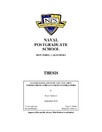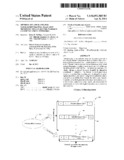Performance analysis of certain components of fire control equipment for bombing aircraft
| dc.contributor.advisor | Draper, C. E. | |
| dc.contributor.author | Yates, Alan H. | |
| dc.contributor.author | Schneider, Raymond J. | |
| dc.contributor.author | Blough, I. Kinter | |
| dc.contributor.author | Yates, Alan H. | en_US |
| dc.contributor.author | Schneider, Raymond J. | en_US |
| dc.contributor.author | Blough, I. Kinter | en_US |
| dc.date | August 1946 | |
| dc.date.accessioned | 2012-03-14T17:52:54Z | |
| dc.date.available | 2012-03-14T17:52:54Z | |
| dc.date.issued | 1946-08 | |
| dc.identifier.uri | https://hdl.handle.net/10945/6504 | |
| dc.description | This thesis document was issued under the authority of another institution, not NPS. At the time it was written, a copy was added to the NPS Library collection for reasons not now known. It has been included in the digital archive for its historical value to NPS. Not believed to be a CIVINS (Civilian Institutions) title. | en_US |
| dc.description.abstract | This paper deals with the 2CH101 computer used in the Central Fire Station System as installed in the U.S. Army Air Force's heavy bomber, type B-29. Essentially, the computer consists of six servomechanisms which position gears, "waggle sticks", and finally four differential syncho-generators, the latter modifying signals sent from the sighting station for ballistic and land corrections developed within the computer and transmitting resultant gun orders to the firing station. In their report the authors have presented results of detailed tests on three of the servomechanism channels, the Range Input Channel, the Azimuth Input channel, and the Elevation Input channel. Tests were made from a transfer function viewpoint. Certain static sensitivities were measured. The Altitude and Airspeed Input channel and the Azimuth and Elevation-Total Correction channels were not tested in through detail since certain essential units of the system were not available. However, other pertinent information on these channels is presented insofar as experimental determination was possible. Briefly, the chief results and conclusions may be listed as follows: (1) The servomechanism channels are properly damped and stable but have a rather low resonant frequency; (2) maximum speed of follow-up in these channels, as listed by the driving motors, is too slow to handle modern, high-velocity problems; (3) solution time is relatively long, and is approximately proportional to the amount of total correction required; (4) the overall computer performance is limited by the connector or discontinuous type of servomechanism used. These function as proportional type servos, and as such have steady state velocity errors. | en_US |
| dc.description.uri | http://archive.org/details/performancenalys109456504 | |
| dc.language.iso | en_US | |
| dc.language.iso | en_US | en_US |
| dc.rights | This publication is a work of the U.S. Government as defined in Title 17, United States Code, Section 101. Copyright protection is not available for this work in the United States. | en_US |
| dc.subject.lcsh | Aeronautics | en_US |
| dc.title | Performance analysis of certain components of fire control equipment for bombing aircraft | en_US |
| dc.type | Thesis | en_US |
| dc.contributor.corporate | Massachusetts Institute of Technology | |
| dc.contributor.department | Aeronautical Engineering | |
| dc.description.service | U.S. Navy (U.S.N.) authors. | en_US |
| dc.identifier.oclc | ocm27064162 | en_US |
| etd.thesisdegree.name | M.S. | en_US |
| etd.thesisdegree.level | Masters | en_US |
| etd.thesisdegree.grantor | Massachusetts Institute of Technology | en_US |
| etd.verified | yes | en_US |
Files in this item
This item appears in the following Collection(s)
-
1. Thesis and Dissertation Collection, all items
Publicly releasable NPS Theses, Dissertations, MBA Professional Reports, Joint Applied Projects, Systems Engineering Project Reports and other NPS degree-earning written works.





